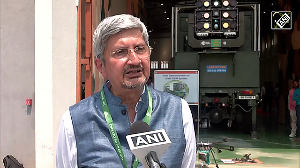Ever pored over the importance of job description to recruiting? It is a critical issue, as is being realised by both, the employers and employees. It is the first step to a synergistic alliance between the two. So, a precise description more often than not leads to precision hiring.
Global competition means companies are focussing strongly on their core competence -- and this is reflected in their focus on precision hiring -- which comes through cogent job descriptions.
"Firms are increasingly becoming more and more focussed and choosy when it comes to hiring managerial talent at the middle and senior levels," says Vijay Karkare ED&CEO of Gilbert Tweed Associates, a headhunting firm.
A precise job description is becoming critical to this, he adds. Our clients Tata Chemicals asked us to draft the job description for various levels in their hierarchy.
Says Advait Kurlekar, director (management consulting), Cedar, a multinational consulting firm, "The manner in which a firm advertises a position is proportional to its culture and sensitivity of the job being advertised."
According to him, firms don't seem to be transparent about their job descriptions. "In fact, many don't even follow any job descriptions. And there are many more who don't tell their employees what is expected of them. Some firms are also guilty of failing to update their job descriptions as and when the requirements for a particular position changes," he points out.
Gulshan Vohra, general manager with headhunting major Omam Consultants, says, "We help firms that ask us to script a job description by asking them questions about the position in detail with emphasis on clarity about the roles and responsibilities."
But Vohra laments that firms do not give 100 per cent job descriptions.
"But whenever they have given us a 50 per cent description of the job it has made our life easier and aided us in delivering the goods in a better way."
With a boom in hirings, companies, of late, are coming to terms with the fact that they need to redefine the role of a position by enriching their span of control, authority, responsibility and decision making powers.
Exclusivity in assignments is a thing of the past for headhunters who now have to operate in an intensely competitive environment says Vohra.
For this headhunters need to be smart enough to read in between the lines of a job description and elicit unwritten information about the qualities in an incumbent such as leadership so as to deliver value to their clients, says Vijay Karkare of Gilbert Tweed.
What's a job description?
- It contains the job title, basic qualifications required, age, experience, preferred industries and mission of the position that is being advertised.
- It details the primary, secondary and tertiary responsibilities of the incumbent -- called key result areas in HR parlance. It outlines the mandatory and optional skill sets and competencies required for the position.
- It tells the candidate his position in the firm's hierarchy by giving information about the meetings an incumbent is required to attend, number and types of reports to be provided to his superiors and reports that would be received from his subordinates.
- Further, it would specify the amount of time an incumbent needs to allocate to the various roles expected of him and the level of parallel reporting he needs to do in case the role entails working in cross functional teams.
- Last but not the least, it throws light on performance evaluation parameters, career path and compensation and benefits inclusive of fixed and variable pay and non-monetary compensation such as flexi-timing and sabbaticals.







 © 2025
© 2025